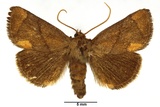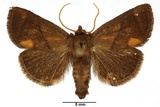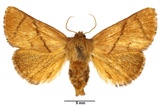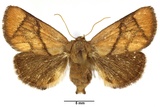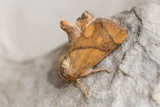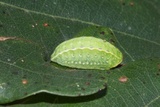Apoda limacodes (Hufnagel, 1766) Species
Last modified: May 16, 2024, 11:40 a.m.
A common species throughout Belgium.
This species is considered Least Concern according to the IUCN Red List category for Flanders 2023.
Details
- Classification
- Family: Limacodidae > Genus: Apoda > Species: Apoda limacodes
- Vernacular names
- Slakrups (NL), Festoon (EN), la Tortue (FR), Großer Schneckenspinner (DE)
- Synonyms
- Apoda avellana sensu auct. nec (Linnaeus, 1758) and Apoda testudo (Denis & Schiffermüller, 1775)
- First mention in Belgium
- De Sélys-Longchamps E. 1837. Catalogue des Lépidoptères ou Papillons de la Belgique, précédé du tableau des Libellulines de ce pays. — — : 1–29. On page 24 (as Limacodes Testudo). view page
- Status
-
Native
Distribution
Caterpillar
The caterpillar is up to 15 mm long, oval, green with two yellow longitudinal stripes with red accents and regularly distributed elongated yellow spots.
It has no visible legs and no obvious body segmentation. Instead of abdominal prolegs, there are sucker-like discs which enable the larvae of limacodids to seem to glide along the leaf surface.
Bionomics
The caterpillar usually hibernates in a cocoon on the underside of a leaf, with which it falls to the ground in the fall. Sometimes the caterpillar drops to the ground and makes a cocoon between fallen leaves.
The adults come to light or can occasionally be seen flying in the canopy during the day.
Flight periods
The adults fly from mid-May till mid-August, occasionally later.
Observed on
- Substrates:
- Deciduous trees
The larva lives on a wide variety of trees and lower plants with a preference for Quercus and Fagus.
Habitat
It inhabits dunes, heathland with mature oaks, broadleaved deciduous forests, shrubs, hedges and gardens.
